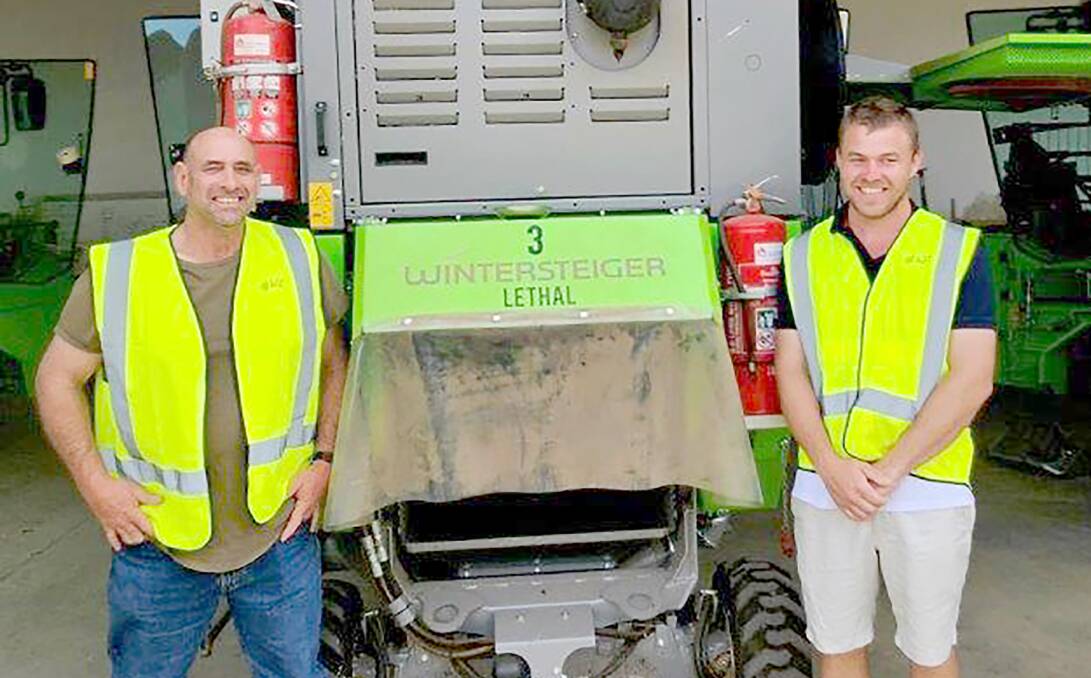
Bulla Burra's Robin Schaefer takes a session about green-on-green technology.
Consultant Kenton Porker talks about canola seeding timing near Wynarka.
A travelling group of 12 people recently participated in the Grower Group Alliance (GGA) South-West WA Drought Resilience Adoption and Innovation Hub (SW WA Hub) tour to South Australia.
The cohort, comprised of farmers, researchers, consultants and hub staff, who examined agtech, glasshouse and field trials that showcased innovative research as part of an 'exchange experience' with the South Australian Drought Resilience Adoption and Innovation Hub.
SW WA Hub project manager Kellie-Jane Pritchard said the tour was co-designed between the hubs from both States to highlight options that could be applied on-farm to help manage variable seasons.
"Tour participants joined from Yuna, Northampton, Dowerin, Quairading, Merredin, Coorow and Perth - providing opportunity to learn from one another, as well as the SA growers and researchers," Ms Pritchard said.
"In designing the tour, the hubs wanted to ensure a well-rounded experience for all participants."
Launching the tour near Roseworthy at the SA Hub headquarters, Australian Grain Technologies (AGT) marketing and communications manager Dan Vater led the WA group through the greenhouses, the seed storage chambers, the malting area and the bread testing area, highlighting that yield was still the major parameter in their breeding.
This was closely followed by quality, disease and abiotic stressors.
The group then visited Dr Mariana Caetano at the University of Adelaide, who spoke about measuring methane emissions and different approaches to reducing these emissions - including the use of bromoform from asparagopsis (seaweed).
A visit to the South Australian Research Development Institute looked at Yusuf Genc's germplasm work regarding salinity and drought tolerance.
SW WA Hub adoption manager Julianne Hill said this work was intriguing.
"Using wild integrations along with Chinese spring wheat and Mace had real potential for our WA growers," Ms Hill said.
The Farrell Flat frost learning centre was the final stop for day one.
Here, AgriLink's Mick Faulkner and Ben Smith spoke about mixing wheat varieties, mixing faba bean and lentils, using safflower and how ice-nucleating bacteria worked in managing frost risk.
Kicking off day two, the Hart Field day shed insights on crop breeding and genetics, finding out what the latest was about drought and salinity tolerance, investigating if it was possible to farm without glyphosate and to see if there was anything new in frost mitigation.
Extensive trials and 30 highly-regarded speakers, including RiskWi$e, a five-year national initiative of about $30 million that will run from 2023 to 2028, to understand and improve the risk-reward outcomes for Australian graingrowers by supporting grower on-farm decision-making, were showcased.
Dr Chris Preston, of University of Adelaide Weed Science Research Group, spoke of exploring the logistics of farming without glyphosate.
Just outside of Loxton, Mallee Sustainable Farming hosted the group on day three at Lowaldie where they looked at the ripping effect on mid and top slopes of their dune swale systems.
Ms Hill said the interest in deep ripping in South Australia was similar to that in WA.
"The group asked many questions, including one around compaction of these deep ripped soils and their short-term effect," she said.
Journeying back to Loxton, the group toured Bulla Burra's collaborative farming operation, exploring farming in this low rainfall area (the average growing season rainfall has been about 150 millimetres in the past 10 years).
General manager Robin Schaefer shared with the group why summer weed management is key.
This pitstop also explored the use of variable rate nutrition and seed in variable soil types - shifting nutrition from the poor soils to the better loamy soils, and increasing seeding rate on more fragile sandy ridges.
Ms Pritchard said the feedback spoke to the success of the tour.
"The success of the study tour was evident in the responses from the participants," Ms Pritchard said.
"Feedback was that the content was highly relevant and that there were many take-home messages.
"It was pleasing to see such enthusiasm and a genuine investment in practice change."

